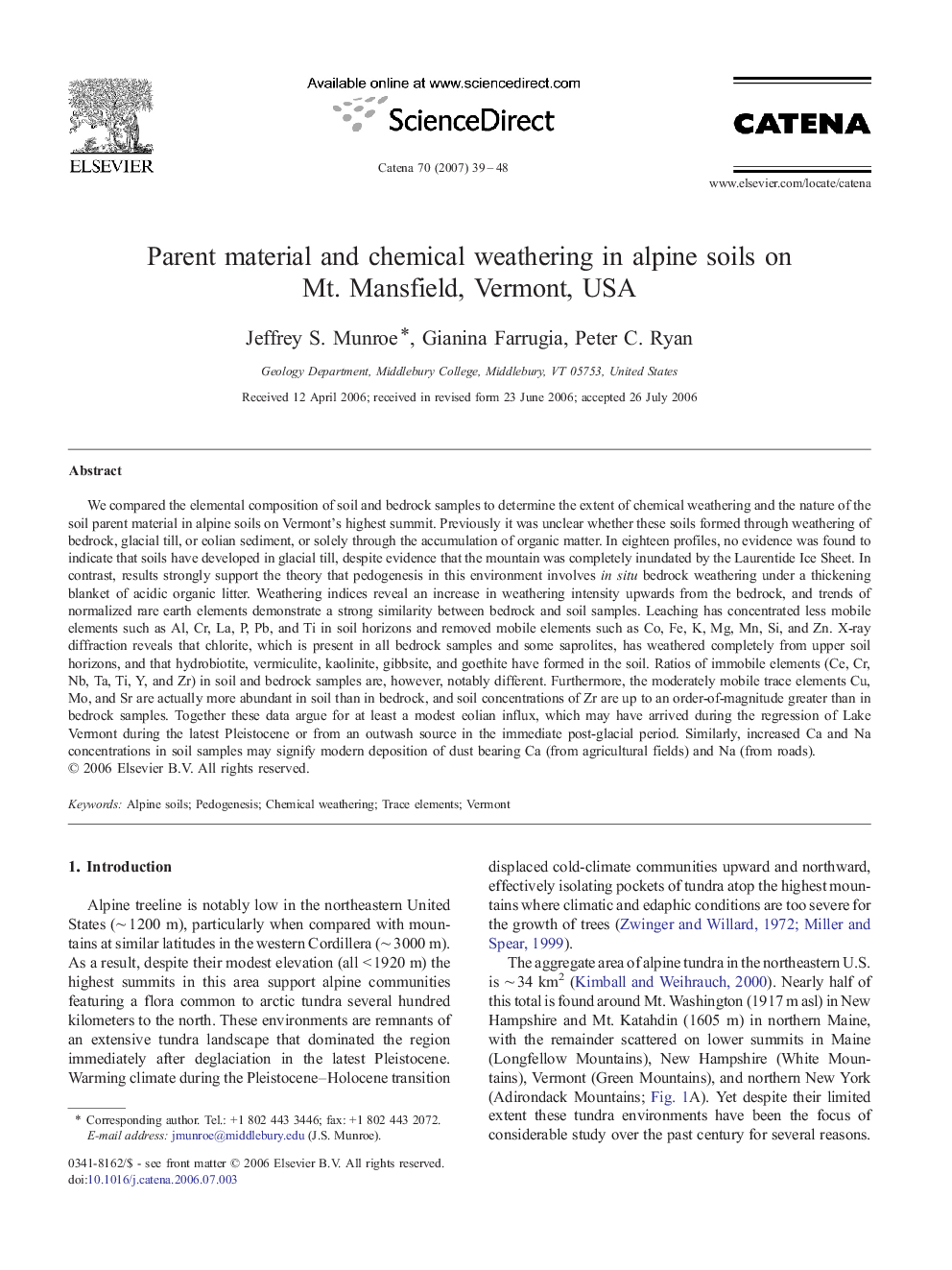| کد مقاله | کد نشریه | سال انتشار | مقاله انگلیسی | نسخه تمام متن |
|---|---|---|---|---|
| 4572626 | 1332188 | 2007 | 10 صفحه PDF | دانلود رایگان |

We compared the elemental composition of soil and bedrock samples to determine the extent of chemical weathering and the nature of the soil parent material in alpine soils on Vermont's highest summit. Previously it was unclear whether these soils formed through weathering of bedrock, glacial till, or eolian sediment, or solely through the accumulation of organic matter. In eighteen profiles, no evidence was found to indicate that soils have developed in glacial till, despite evidence that the mountain was completely inundated by the Laurentide Ice Sheet. In contrast, results strongly support the theory that pedogenesis in this environment involves in situ bedrock weathering under a thickening blanket of acidic organic litter. Weathering indices reveal an increase in weathering intensity upwards from the bedrock, and trends of normalized rare earth elements demonstrate a strong similarity between bedrock and soil samples. Leaching has concentrated less mobile elements such as Al, Cr, La, P, Pb, and Ti in soil horizons and removed mobile elements such as Co, Fe, K, Mg, Mn, Si, and Zn. X-ray diffraction reveals that chlorite, which is present in all bedrock samples and some saprolites, has weathered completely from upper soil horizons, and that hydrobiotite, vermiculite, kaolinite, gibbsite, and goethite have formed in the soil. Ratios of immobile elements (Ce, Cr, Nb, Ta, Ti, Y, and Zr) in soil and bedrock samples are, however, notably different. Furthermore, the moderately mobile trace elements Cu, Mo, and Sr are actually more abundant in soil than in bedrock, and soil concentrations of Zr are up to an order-of-magnitude greater than in bedrock samples. Together these data argue for at least a modest eolian influx, which may have arrived during the regression of Lake Vermont during the latest Pleistocene or from an outwash source in the immediate post-glacial period. Similarly, increased Ca and Na concentrations in soil samples may signify modern deposition of dust bearing Ca (from agricultural fields) and Na (from roads).
Journal: CATENA - Volume 70, Issue 1, 1 June 2007, Pages 39–48